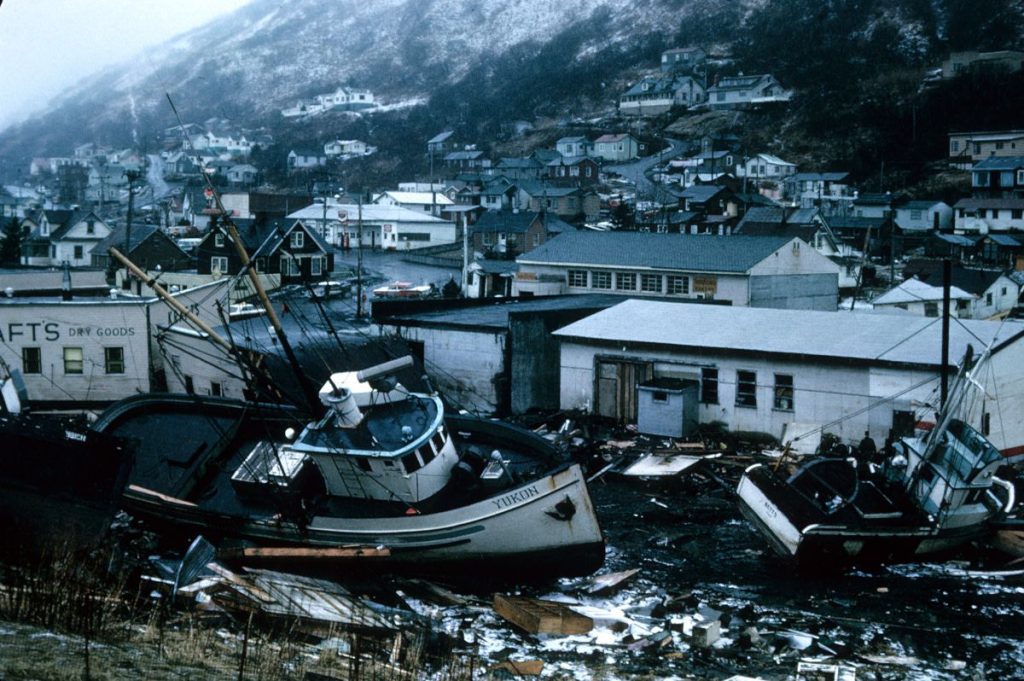
Disaster is a natural calamity which may be in the form of
• Drought
• Flood
• Cyclone
• Forest fire
• Landslide
• Earthquake
• Volcanic eruption etc.
DISASTER PREVENTION STRATEGY
Construction of dams can prevent flood havoc. Identify the rivers and construct dams to regulate flow of water during heavy rainfalls. Spreading the awareness of building earthquake, cyclone and fire resistant structures can prevent disasters. Major and minor irrigation projects aim at controlling drought.
EARLY WARNING SYSTEM
Space technology plays an important role in efficient mitigation of disaster. Indian Meteorological Department has developed a four stage warning system for a cyclone. The system works on the observation of development of low pressures in ocean 48 hours prior to the time of expected cyclone to hit land the alert warning is given. 24 hours prior to the anticipated time of arrival of cyclone, warning is given.
Then 12 hours early cyclone arrival warning is given. Warnings about storms, their intensity and the likely path on regularly given through radio and television until the storm passes over.
DISASTER PREPAREDNESS
At all levels of civil administration committees are established and responsibilities and urgently required finance entrusted. At national level Ministry of Home Affairs, Government of India, a national disaster management division is established. It has prepared guidelines for disaster management. The national disaster management authority is responsible for
• Providing necessary support and assistance to state Governments.
• Coordinating and managing Government policies for disaster mitigation.
• Ensure adequate preparedness at all levels.
• Coordinating response to a disaster when it strikes.
• Assisting the provisional Governments in coordinating post disaster relief and rehabilitation.
• Monitor and introduce a culture of building a requisite features of disaster mitigation in all development plan and programmes.
• Community involvement and awareness generation.
• Close interaction with the corporate sector, Non-Governmental Organisations (NGO) and the media.
• Train the disaster managers.
Training the concerned people in facing national disaster is very important part of disorder preparedness. Training programmes are organised in Administrative Training Institutions and at various places for different target groups. In CBSE curriculum also lessons are added on disaster mitigation. The masons and engineers should be trained to build earthquake, cyclone and fire resistant buildings. Hospital staff should be trained to take the challanges of disaster management.
Disaster prone areas are to be identified and at suitable places good hospitals should be built, communication facility provided including helicopter landings. Sufficient medicines should be stored.
DISASTER MITIGATION
Disaster mitigation means minimizing the painfulness which occur due to disaster. After the disaster the people face the following problems:
1. Shelters are completely or partially damaged
2. Food is not available when required
3. Drinking water shortage is felt.
4. Diseases spread.
5. Communication systems are affected.
To mitigate the misery of the affected people the following steps are to be taken:
1. Provide temporary accommodation with water supply, sanitary and electricity facilities.
2. Extend manpower, material and financial assistance to repair/build their houses.
3. During the expected period of cyclones and floods, store up at least seven day stock of essential food articles, medicines and water supply.
4. Continue to listen to warning bulleting and keep in touch with local officials.
5. Be ready to evacuate people to places of safety when advised.
6. Remove damaged and decayed parts of trees to make them resist wind and reduce the potential for damage.
7. Before cyclone season starts carry out all necessary repairs to the building.
8. Keep valuables and documents in containers which cannot be damaged by water.
9. Talk to children and explain about cyclone/floor. Remain calm.
10. Fishermen are advised not to venture into the sea during cyclone warning period.
11. Avoid taking shelter near old and damaged building or near trees.
12. Do not touch power lines.
DISASTER RESCUE AND RELIEF MEASURES
Disaster rescue and relief means taking steps to face the distress situation after the disaster has taken place. Volunteer groups, police force or military teams are organised to
• Rescue the people trapped.
• Rendering first aid to wounded
• Donating blood
• Organizing clearing up so that normalcy returns.
• Locating places where dead bodies can be kept until they are disposed off.
The groups should know that victims are demoralized, anxious and depressed. The volunteers have to win the confidence of victims and carry out rescue operations.
The officers carrying out rescue and relief measures should have good leadership qualities and quick decision taking abilities. Emergency announcements should be made. Required rescue teams should be formed and guided. Higher authorities informed about the situation continuously. Mobilize national resources, if necessary. They should undertake steps for compensation and maintenance of rescue operations.
DISASTER RESETTLEMENT, REHABILITATION AND
RECONSTRUCTION
Disaster resettlement, rehabilitation and reconstruction means taking steps to mitigate the problems of victims after the disaster disappears. Victims need help and assistance to return to their homes after disaster period is over. They may
be helped to build their damaged houses. If it is flood prone area, they may be provided sites at new settlement areas which are safe. Financial assistance may be mobilized for constructing houses. The new area should be developed by providing approach roads, water supply and electricity. Loss of lives and crop should be compensated. New settlement should have school and hospital facilities. All efforts should be made to get normalcy restored.


